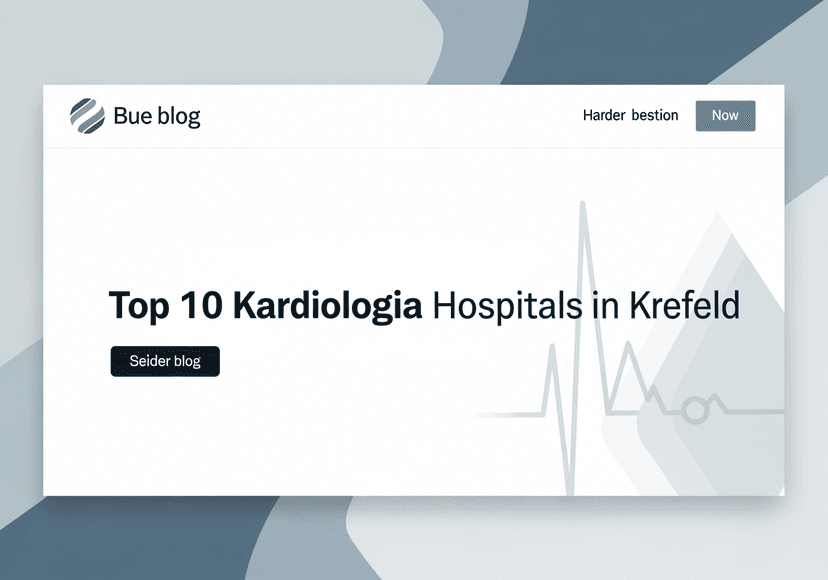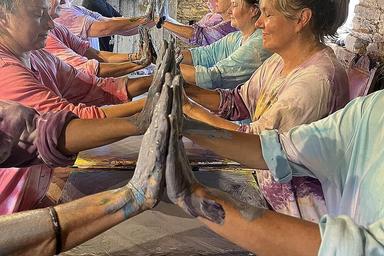
Read about Transcatheter Aortic Valve Replacement (TAVR)
27 Sep, 2023
 Healthtrip Team
Healthtrip TeamIn the realm of modern medicine, where innovation is the heartbeat of progress, there exists a procedure that has sent shockwaves through the corridors of cardiac care. It goes by the acronym TAVR, but its implications are far from diminutive. Transcatheter Aortic Valve Replacement, or TAVR, represents a triumph of science and technology that reaches into the very core of our being, our hearts. In this journey, we will delve into the definition of TAVR, unlocking the secrets held within its seven letters.
we will illuminate the immense significance it bears, not only for the field of cardiology but for every heartbeat that seeks to beat in harmony with life itself. Brace yourself for a breathtaking exploration of a medical marvel that touches not just the heart, but the essence of existence.
Most popular procedures in India
What is Transcatheter Aortic Valve Replacement ( TAVR) ?
Transcatheter Aortic Valve Replacement (TAVR) is a medical procedure used to replace a damaged or narrowed aortic valve in the heart without the need for open-heart surgery. Instead of a large incision, doctors insert a new valve through a catheter (a thin tube) usually through the leg or chest, guiding it to the heart. This new valve is expanded, pushing aside the old, damaged valve, and begins working immediately to help blood flow more efficiently, reducing symptoms like chest pain and shortness of breath. TAVR is often done in cases where traditional surgery is too risky or not possible, and it can help improve a patient's quality of life.Why TAVR is Performed ?
Wellness Treatments
Give yourself the time to relax
Lowest Prices Guaranteed!

Lowest Prices Guaranteed!
Today we're going to talk about why doctors might recommend a procedure called Transcatheter Aortic Valve Replacement, or TAVR for short. TAVR is done to help people who have a problem with their aortic valve. So, let's dive into it:
1. Aortic Valve Stenosis: First off, one of the main reasons for TAVR is a condition called Aortic Valve Stenosis. This is when your aortic valve, which controls blood flow from your heart to the rest of your body, gets narrow. Imagine a door that doesn't open fully; that's what happens to your valve. And when it narrows, it makes it hard for blood to flow properly, which isn't great for your heart.
2. Impaired Blood Flow: This narrowing of the valve means your heart has to work extra hard to pump blood through it. Over time, this can lead to problems like chest pain, shortness of breath, and fatigue. So, TAVR comes into play to fix this issue and improve your heart's performance.
Now, let's talk about the good stuff:
Benefits of TAVR
here are the benefits of TAVR in bullet points for quick reference
- Minimally Invasive: Unlike traditional open-heart surgery, TAVR does not require a large chest incision or the use of a heart-lung machine. This leads to shorter recovery times, reduced pain, and fewer complications.
- High-Risk Patients: TAVR is often a lifesaving option for individuals who are considered high-risk or inoperable for traditional surgery due to age or underlying health conditions.
- Improved Quality of Life: Many patients experience significant improvements in their quality of life, with increased energy and reduced symptoms of aortic valve stenosis after TAVR.
- Advancing Technology: TAVR represents a remarkable fusion of medical expertise and technological innovation, showcasing the relentless pursuit of safer and more effective cardiac treatments.
Who Needs TAVR?
A. Aortic Valve Stenosis: TAVR is typically recommended for individuals with aortic valve stenosis, a condition where the aortic valve narrows, restricting blood flow from the heart.
B. High-risk or Inoperable Patients: TAVR can be a suitable option for patients who are considered high-risk for traditional open-heart surgery or those deemed inoperable due to various health factors. It offers a less invasive alternative for these individuals.
Conditions It Addresses:
- Aortic Valve Stenosis: TAVR is primarily designed to address and treat aortic valve stenosis, restoring proper valve function.
- Contraindications: While TAVR is beneficial for many, there are certain contraindications or situations where it may not be recommended. The specific contraindications can vary depending on an individual's health and medical history. Your healthcare provider will assess these factors to determine if TAVR is the right option for you.
These indications highlight that TAVR is a valuable procedure for those with aortic valve stenosis and for patients who may not be suitable candidates for traditional valve replacement surgery. Always consult with your healthcare team to determine the most appropriate treatment for your specific condition.
Preparation for TAVR
A. Medical Evaluation: You'll have a thorough medical checkup to assess your health and heart condition.
B. Medication Management: Your medications may be adjusted as needed to prepare for the procedure.
C. Lifestyle Adjustments: You might be advised to make dietary changes, exercise, or quit smoking for a smoother recovery.
D. Informed Consent: You'll receive detailed information about TAVR and give your informed consent before the procedure.
E. Preoperative Testing: Various tests, including blood work and imaging, will be done to ensure you're ready for TAVR.
The TAVR Procedure
Before the TAVR Procedure:
- Medical Checkup: You'll visit the doctor for a checkup. They'll ask about your health and do some tests to understand how your heart is doing.
- Heart Valve Assessment: The doctor will check your heart valve to see if it's working properly. They might use ultrasound or other special scans.
- Planning: A team of doctors will talk about your case and decide if TAVR is the right treatment for you. They'll plan everything carefully.
During the TAVR Procedure:
- Anesthesia: You'll be given medicine so you don't feel pain during the procedure. You might be asleep or just feel very relaxed.
- Inserting the Valve: Instead of cutting you open, the doctors use a small tube (catheter) to guide a new valve to your heart through a blood vessel, usually in your leg or chest.
- Replacing the Valve: The new valve is placed inside your old one. It pushes the old valve out of the way and starts working right away.
- Monitoring: The doctors use special tools to watch everything on a screen and make sure the new valve is in the right place.
After the TAVR Procedure:
- Recovery: You'll spend some time in a special recovery area to wake up from the anesthesia. Nurses will keep an eye on you.
- Observation: You might stay in the hospital for a few days so the doctors can make sure everything is going well.
- Rehabilitation: You might need physical therapy to help you regain strength and mobility.
- Follow-Up: You'll have regular checkups with your doctor to make sure your new valve is working as it should.
Risks and Complications of TAVR
- Bleeding: There is a risk of bleeding, especially at the access site where the catheter is inserted. In some cases, this may require medical intervention.
- Infection: Although rare, there is a risk of infection at the surgical site or within the heart.
- Stroke: During the procedure, debris or clots can dislodge and potentially cause a stroke by blocking blood flow to the brain.
- Valve Leakage: There's a possibility of the new valve leaking, which may require additional procedures or intervention to correct.
- Arrhythmias: Irregular heart rhythms, such as atrial fibrillation, can occur as a complication of TAVR.
- Vascular Complications: Damage to blood vessels, including dissections or tears, can occur during catheter placement.
- Pacemaker Implantation: In some cases, a pacemaker may be needed if the heart's electrical system is affected during the procedure.
- Prosthetic Valve Dysfunction: Over time, the new valve may wear out or develop issues that require replacement or repair.
- Allergic Reactions: Although rare, allergic reactions to materials used in the procedure can occur.
How can we help with the treatment?
If you're on the lookout for treatment in India, let Healthtrip be your compass. We will serve as your guide throughout your medical treatment. We'll be by your side, in person, even before your medical journey commences. The following will be provided to you:
- Connect with renowned doctors from a network spanning 35+ countries and access the world's largest health travel platform.
- Collaboration with 335+ top hospitals , including Fortis and Medanta.
- Comprehensive treatments from Neuro to Cardiac to Transplants, Aesthetics, and Wellness.
- Post-treatment care and assistance.
- Teleconsultations at $1/minute with leading surgeons.
- Trusted by 44,000+ patients for appointments, travel, visa, and forex assistance.
- Access top treatments and packages, such as Angiograms and many more.
- Gain insights from genuine patient experiences and testimonials.
- Stay updated with our medical blog.
- 24/7 unwavering support, from hospital formalities to travel arrangements or emergencies.
- Pre-scheduled specialist appointments.
- Prompt emergency assistance, ensuring safety.
Explore more such patient success stories of Healthtrip , what Patients Say About Healthtrip
Watch more : Healthtrip Testimonials
TAVR is a game-changing heart valve replacement done through a catheter, sparing patients from open-heart surgery. Ideal for high-risk cases, it enhances life quality. Preparations involve assessments, meds, and lifestyle tweaks. But, like all procedures, it carries risks, emphasizing the need for a skilled medical team.
Related Blogs

Top 5 Heart Surgeons in Krefeld
Find expert cardiology specialists in Krefeld, Germany recommended by HealthTrip.

Top 10 Cardiology Hospitals in Krefeld
Discover the leading cardiology hospitals in Krefeld, Germany with HealthTrip.

Top 5 Heart Surgeons in Berlin
Find expert cardiology specialists in Berlin, Germany recommended by HealthTrip.

Top 10 Cardiology Hospitals in Berlin
Discover the leading cardiology hospitals in Berlin, Germany with HealthTrip.

Top 5 Heart Surgeons in Schwerin
Find expert cardiology specialists in Schwerin, Germany recommended by HealthTrip.

Top 10 Cardiology Hospitals in Schwerin
Discover the leading cardiology hospitals in Schwerin, Germany with HealthTrip.










